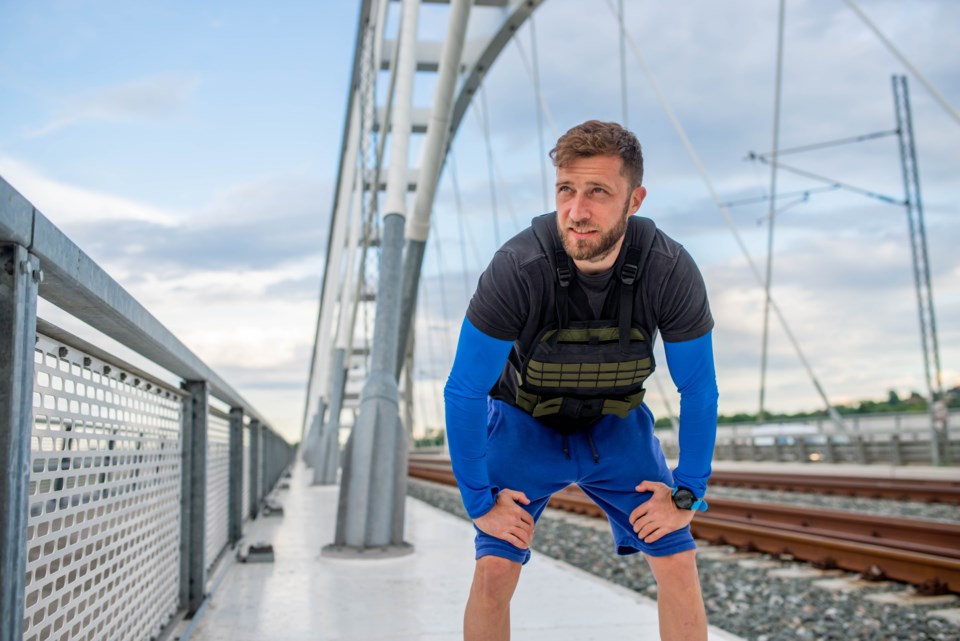Health
Fitness Trend: Are Weighted Vests a Game-Changer or Just a Fad?

The use of weighted vests has surged in popularity within the fitness community, transitioning from a specialized tool for military trainees and elite athletes to a mainstream fitness accessory. This trend has captured attention at bootcamp classes, on social media platforms like TikTok, and among casual workout groups in parks. The question arises: are weighted vests a genuine revolution in fitness or simply another passing trend likely to be forgotten alongside outdated equipment like ThighMasters?
Weighted vests add resistance to body-weight exercises, enhancing everyday movements such as walking, squats, and push-ups without the need for additional weights. The added load increases muscle activation, boosts calorie expenditure, and intensifies the cardiovascular response, effectively elevating the effort of standard routines.
Benefits of Using Weighted Vests
Research indicates several key advantages to incorporating weighted vests into fitness regimens.
Stronger Bones
One significant benefit is the promotion of bone health. Engaging in weight-bearing exercises is known to stimulate bone growth, which is essential for preventing conditions like osteoporosis, particularly for individuals approaching midlife. According to health experts, using a weighted vest during activities such as walking or stair climbing increases the stress on bones, encouraging them to remain dense and strong.
Improved Endurance
Weighted vests can also enhance endurance. Studies have shown that training with these vests can improve VO2 max, which measures the body’s ability to utilize oxygen efficiently. As a result, individuals may find themselves less fatigued during physical activities, whether hiking in nature, playing sports, or participating in local races like a September 5K.
Enhanced Muscle Power
Incorporating extra weight challenges the muscles to engage more fibers, leading to greater strength in the legs, glutes, and core. Over time, this conditioning translates to easier everyday tasks, such as carrying groceries or climbing stairs, demonstrating the practical benefits of weighted vests beyond the gym.
Increased Caloric Burn
While not a magic solution, there is a straightforward physics principle at play: the heavier the load, the more energy required for movement. Walking with a weighted vest can elevate calorie burn without necessitating increased speed or duration, making it an attractive option for those looking to offset caloric intake from seasonal indulgences.
Accessibility and Practicality
Unlike many fitness fads that promise quick results, the use of weighted vests is rooted in the concept of progressive overload, a tried-and-true method for building strength, endurance, and bone health. What sets current vests apart is their design—modern versions are more streamlined, adjustable, and user-friendly compared to the bulky models of years past. This accessibility appeals to a broader demographic, from weekend warriors to casual walkers seeking to enhance their fitness level.
Alicia Tyler, a journalist and editor specializing in health, nutrition, and fitness, emphasizes the importance of science-backed health information. As a certified personal trainer and nutritionist based in Toronto, Tyler advocates for the effective use of tools like weighted vests to promote fitness among diverse populations. Her work has appeared in various reputable publications, including Clean Eating and Vegetarian Times.
In conclusion, while weighted vests have gained traction across fitness circles, their long-term impact remains to be fully assessed. They offer a viable option for enhancing workouts and improving overall health. Whether they become a permanent fixture in the fitness landscape or fade into obscurity depends on their continued effectiveness and acceptance among a wide range of users.
-

 Education3 months ago
Education3 months agoBrandon University’s Failed $5 Million Project Sparks Oversight Review
-

 Science4 months ago
Science4 months agoMicrosoft Confirms U.S. Law Overrules Canadian Data Sovereignty
-

 Lifestyle3 months ago
Lifestyle3 months agoWinnipeg Celebrates Culinary Creativity During Le Burger Week 2025
-

 Health4 months ago
Health4 months agoMontreal’s Groupe Marcelle Leads Canadian Cosmetic Industry Growth
-

 Technology3 months ago
Technology3 months agoDragon Ball: Sparking! Zero Launching on Switch and Switch 2 This November
-

 Science4 months ago
Science4 months agoTech Innovator Amandipp Singh Transforms Hiring for Disabled
-

 Education3 months ago
Education3 months agoRed River College Launches New Programs to Address Industry Needs
-

 Technology4 months ago
Technology4 months agoGoogle Pixel 10 Pro Fold Specs Unveiled Ahead of Launch
-

 Business3 months ago
Business3 months agoRocket Lab Reports Strong Q2 2025 Revenue Growth and Future Plans
-

 Technology2 months ago
Technology2 months agoDiscord Faces Serious Security Breach Affecting Millions
-

 Education3 months ago
Education3 months agoAlberta Teachers’ Strike: Potential Impacts on Students and Families
-

 Science3 months ago
Science3 months agoChina’s Wukong Spacesuit Sets New Standard for AI in Space
-

 Education3 months ago
Education3 months agoNew SĆIȺNEW̱ SṮEȽIṮḴEȽ Elementary Opens in Langford for 2025/2026 Year
-

 Business4 months ago
Business4 months agoNew Estimates Reveal ChatGPT-5 Energy Use Could Soar
-

 Technology4 months ago
Technology4 months agoWorld of Warcraft Players Buzz Over 19-Quest Bee Challenge
-

 Business3 months ago
Business3 months agoDawson City Residents Rally Around Buy Canadian Movement
-

 Technology2 months ago
Technology2 months agoHuawei MatePad 12X Redefines Tablet Experience for Professionals
-

 Business3 months ago
Business3 months agoBNA Brewing to Open New Bowling Alley in Downtown Penticton
-

 Technology4 months ago
Technology4 months agoFuture Entertainment Launches DDoD with Gameplay Trailer Showcase
-

 Technology4 months ago
Technology4 months agoGlobal Launch of Ragnarok M: Classic Set for September 3, 2025
-

 Technology4 months ago
Technology4 months agoInnovative 140W GaN Travel Adapter Combines Power and Convenience
-

 Science4 months ago
Science4 months agoXi Labs Innovates with New AI Operating System Set for 2025 Launch
-

 Top Stories2 months ago
Top Stories2 months agoBlue Jays Shift José Berríos to Bullpen Ahead of Playoffs
-

 Technology4 months ago
Technology4 months agoNew IDR01 Smart Ring Offers Advanced Sports Tracking for $169










